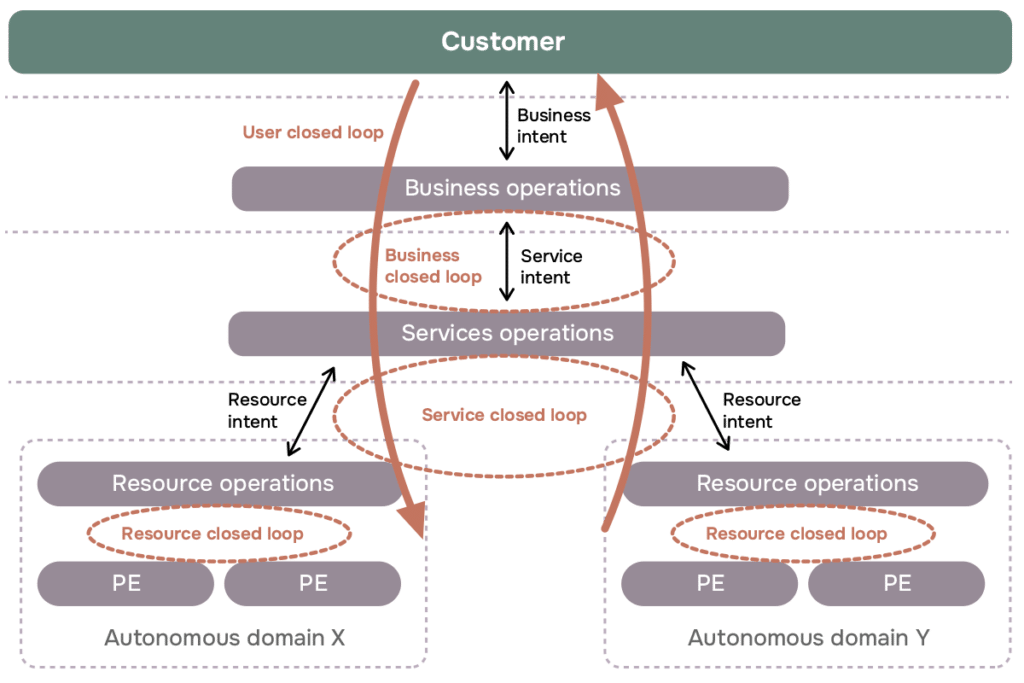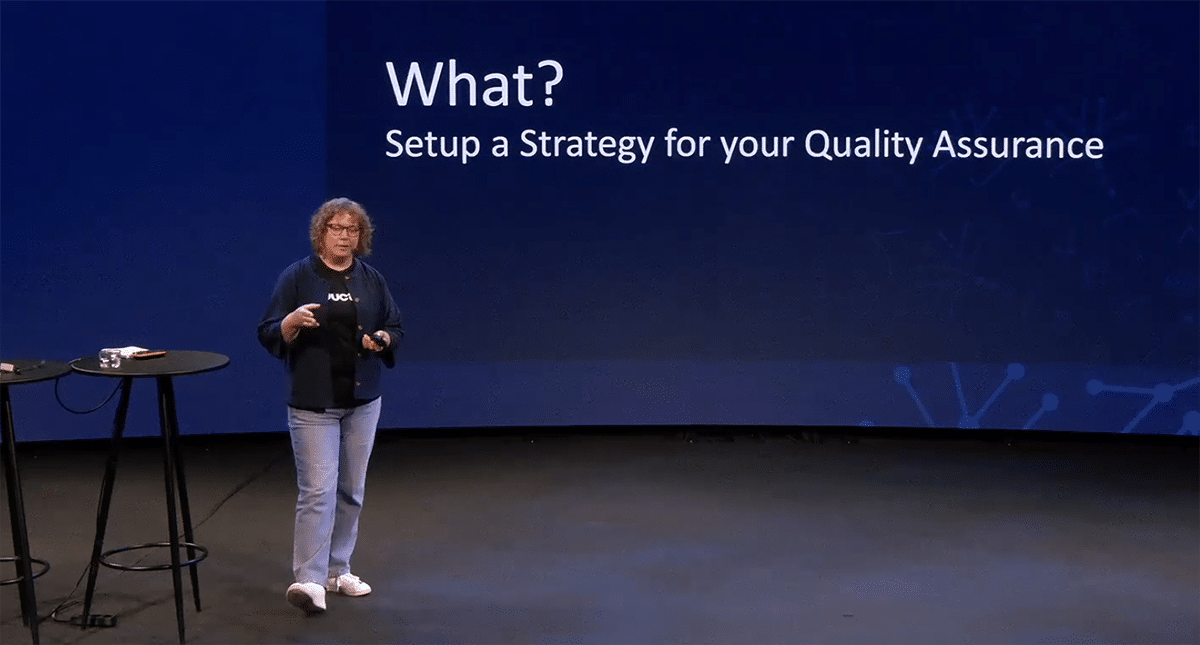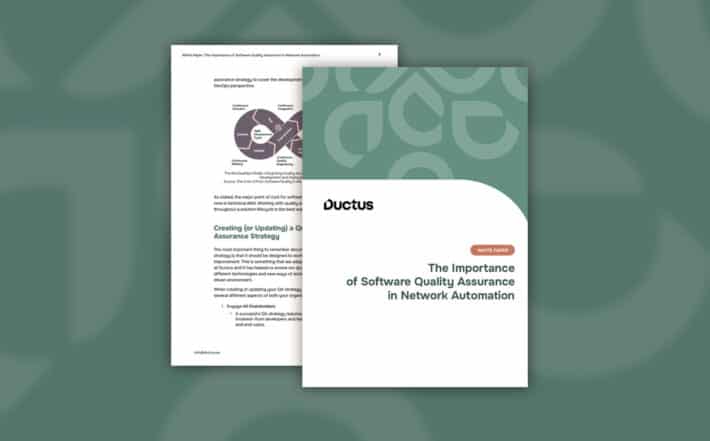
INSIGHT
Autonomous Networks: Challenges and Practical Steps for Communication Service Providers
Telecom networks are becoming increasingly complex and dynamic, with demand for high-speed connectivity, cloud-native services, and seamless customer experiences growing rapidly. Yet, many Communication Service Providers (CSPs) still rely on manual processes across their service lifecycle. This creates bottlenecks that slow down service delivery, drive up operational costs, and increase the risk of human errors.
To meet evolving demands, automation must span all operational levels: Customer, Business, Service, and Resource management. Many CSPs begin their automation journey at the resource level, focusing on tasks like network provisioning and fault detection. However, achieving true scalability, efficiency, and adaptability requires expanding automation beyond resources to include service and business layers.
While end-to-end automation remains the ultimate vision, the path to it is incremental—building from foundational network automation toward a seamlessly intelligent, fully automated ecosystem.
While the goal is clear—zero-touch, zero-wait, and zero-trouble networks—progress remains slow. According to TM Forum’s benchmark study, many CSPs aspire to reach high levels of automation by 2030, yet most are still in early stages of adoption, facing significant challenges such as:
- Legacy infrastructure that wasn’t designed for automation.
- Siloed operational models, making it difficult to integrate automation across domains.
- Lack of real-time data insights, limiting the effectiveness of AI-driven decision-making.
To overcome these challenges, CSPs must shift from isolated automation efforts to an integrated, intent-driven approach. But before exploring how to achieve this, it’s important to define what autonomous networks actually mean.
Automation Maturity: Understanding the Six Levels
To establish a clear roadmap, TM Forum defines six levels of automation:

Fully
Manual:
Operations rely entirely on human intervention.

Assisted Operations:
Some automation exists, but decisions are manual.

Partial Automation:
Specific tasks are automated, but human oversight is still required.

Conditional Automation:
The network can act based on predefined rules, with some degree of autonomy.

High Automation:
AI-driven closed-loop operations significantly reduce human intervention.

Full
Autonomy:
The network becomes self-managing, self-optimizing, and self-healing.
According to TM Forum’s report, CSPs today are mostly between Level 2 and 3, with very few – if any – yet reaching Level 4. While 81% of CSPs aim to reach Level 4 by 2030, few have a clear, executable roadmap to get there. The gap between ambition and execution is wide—without a structured approach, many CSPs risk making disconnected, tactical investments that fail to drive real progress toward full autonomy.
Where CSPs are Investing in Automation
According to TM Forum, CSPs are prioritizing automation in three key areas that deliver the fastest operational improvements:
- Fault Management & Anomaly Detection – 83% of CSPs rank this as their highest priority, aiming to proactively identify and resolve issues before they impact service quality.
- Service Assurance – 75% emphasize the need for automated real-time monitoring and self-healing capabilities.
- Service Delivery Automation – 70% are focused on streamlining provisioning and reducing manual intervention in activation processes.
These priorities reflect a strong push toward operational efficiency, but our experience working with CSPs shows that successful automation requires more than just investing in specific areas—it demands a structured, phased approach that aligns automation efforts with broader business goals.
Our Recommendation: A Phased Approach to Increased Network Automation
Any steps toward increased network automation—no matter how incremental—lay a strong foundation for future advancements. Based on our experience working with CSPs, we recommend the following phased approach to ensure scalable, sustainable automation:
1. Build a Strong Automation Foundation
Many CSPs struggle because they automate individual tasks without a scalable framework. A solid foundation includes:
- Establishing automated and orchestrated service delivery with open APIs—ensuring they are secure and present at every level, from resource management to business operations.
- Ensuring interoperability across legacy and cloud-native environments to avoid vendor lock-in.
- Prioritizing cross-domain orchestration, starting with simpler domains before scaling to complex environments.
2. Data Collection and Analysis
Automation is only as good as the data driving it. Without a clear data collection strategy, CSPs risk accumulating excessive, low-value data, leading to higher costs and inefficiencies.
- Collect, clean, and analyze network data such as events and logs, ensuring it is accurate, relevant, and complete.
- Apply Carl Anderson’s principles from The Data-Driven Organization (2015), which emphasize that data should also be coherent, timely, accessible, consistent, and well-defined.
- Avoid data overload—useless data increases storage and bandwidth costs while raising sustainability concerns.
- Secure all collected data to protect personal and business-critical information.
So when it comes to data, don’t think big, think smart.
3. Implement Intent-Driven, Closed-Loop Operations
Many CSPs still rely on manual intervention for network optimization, which slows down responsiveness, increases operational costs, and limits network adaptability. Closed-loop operations—where networks continuously monitor, analyze, and adjust themselves in real time—are key to reaching higher levels of autonomy.
According to TM Forum’s report, intent-based automation is a fundamental enabler of Autonomous Networks (AN). Instead of relying on predefined scripts or human-driven adjustments, intent allows CSPs to define business requirements, service constraints, and performance objectives—with the network dynamically optimizing itself to meet these goals.
When combined with closed-loop management, this approach enables CSPs to:
- Analyze real-time network and service data to detect optimization opportunities.
- Autonomously adjust configurations based on business and operational intent.
- Reduce downtime and improve service reliability through proactive, automated remediation.
- Use AI where applicable, but not all closed-loop processes require AI—many can be rules-based and still deliver significant efficiency gains.

4. Scale Automation Across Layers
Successful network automation isn’t a one-time transformation—it must be implemented in a layered approach to maximize impact.
- Start at the resource level, focusing on specific network domains before expanding upward to service and business layers.
- Leverage cross-domain automation, ensuring seamless coordination across different network silos.
- Take an incremental approach—progressive automation delivers faster ROI and reduces operational risks compared to large-scale overhauls.
By following these steps, CSPs can align their current operations with long-term goals, paving the way toward autonomous networks.
From Strategy to Execution
While fully autonomous networks may remain a long-term vision, CSPs that act now can gain immediate benefits in efficiency, cost reduction, and service agility. The key is to move beyond isolated automation initiatives and adopt a structured, phased approach that aligns with both technical and business objectives.
With years of hands-on experience helping CSPs navigate complex automation challenges, we know what it takes to drive real results. Let us help your organization move to the next level in the automation journey. Get in touch today.

Peter Sallenhag
peter.sallenhag(at)ductus.se
Phone: +46 70 571 05 82









